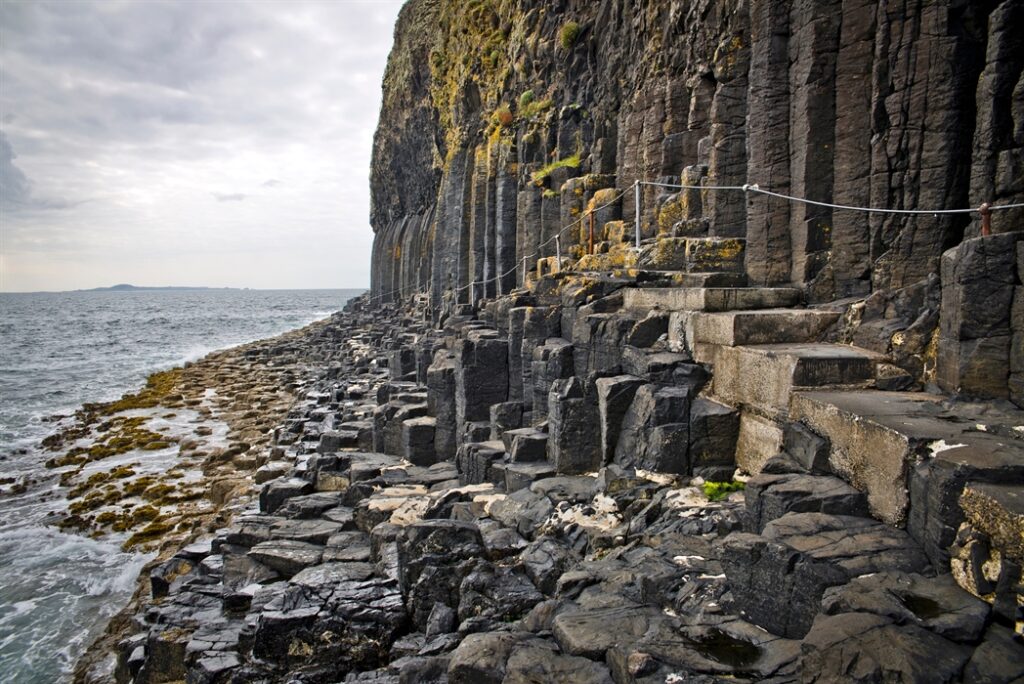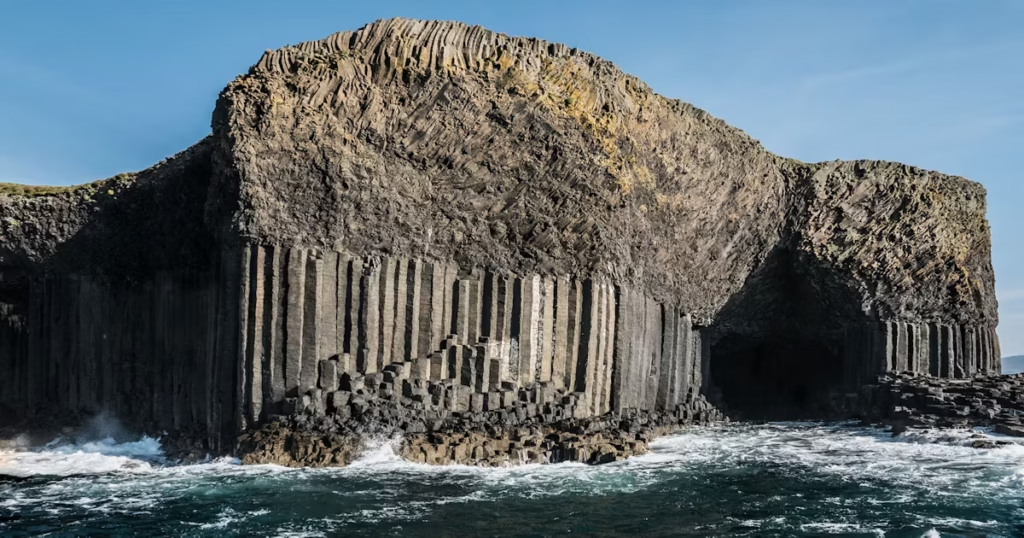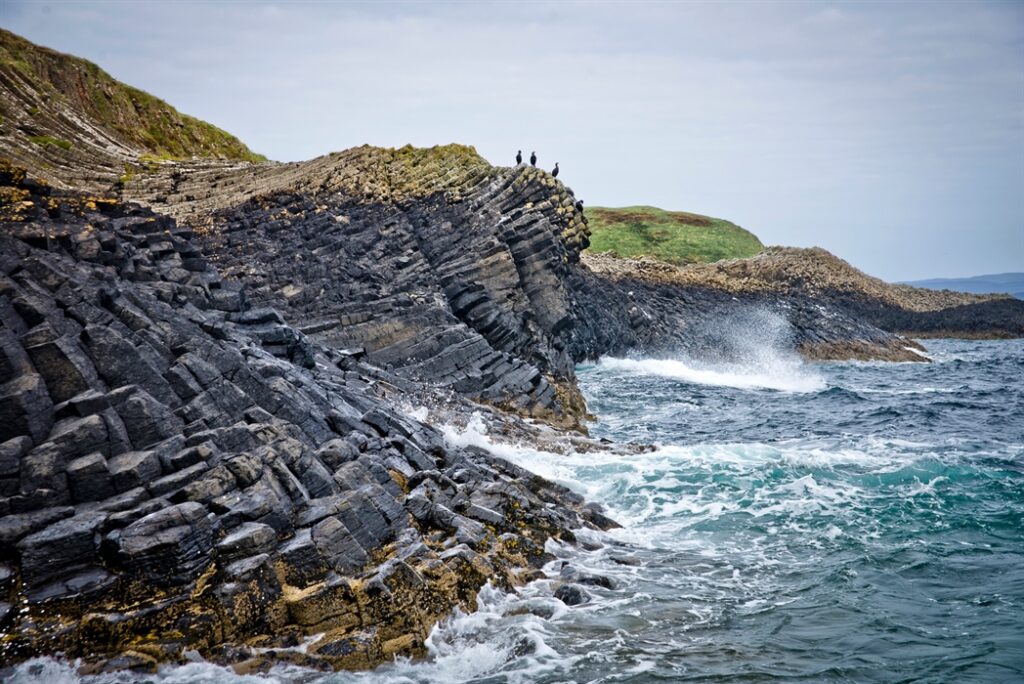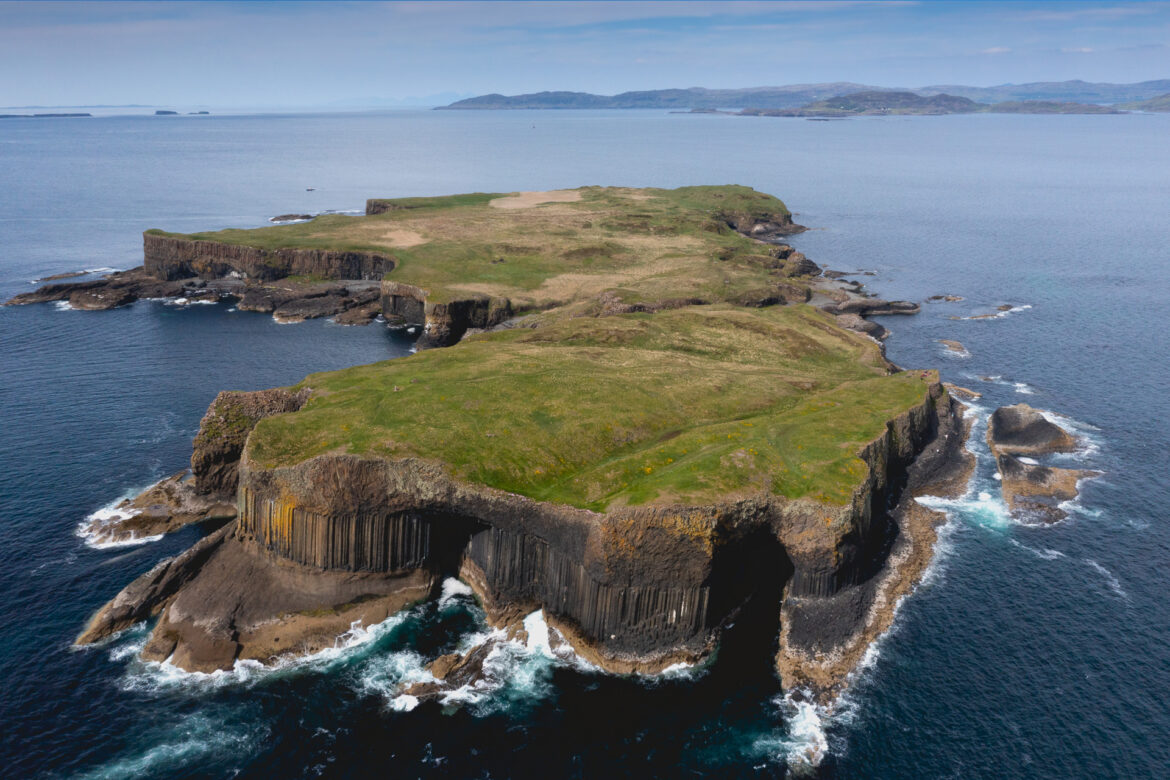The Isle of Staffa, a small uninhabited island in Scotland’s Inner Hebrides, is one of the most extraordinary natural wonders in the British Isles. Just six miles west of the Isle of Mull, Staffa is famous for its dramatic basalt columns, sea caves, and surreal, almost otherworldly landscapes that have inspired artists, musicians, writers, and travellers for centuries. Despite its modest size—barely half a mile long and a quarter of a mile wide—Staffa holds a presence far greater than its physical dimensions. The island’s most iconic feature, Fingal’s Cave, is known worldwide for its cathedral-like acoustics and striking geometric structure, while the surrounding waters teem with wildlife, from puffins to dolphins. Visiting Staffa is not merely a sightseeing excursion: it is an encounter with the raw, ancient forces that shaped Scotland’s coastline and a reminder of the deep connection between nature, culture, and mythology.
A Landscape Forged by Fire and Time

The Isle of Staffa owes its dramatic geological features to volcanic activity dating back over 60 million years. During the Paleogene period, intense volcanic eruptions across what is now western Scotland produced vast rivers of molten basalt. As these lava flows cooled and contracted, they fractured into geometric shapes—most commonly hexagonal columns—similar to those found at the Giant’s Causeway in Northern Ireland. Staffa and the Giant’s Causeway were once part of the same volcanic system, and together they form one of the most remarkable natural geological networks in the world.

Staffa’s basalt cliffs rise almost vertically from the sea, creating a fortress-like appearance. From afar, the island looks like a rectangular block sliced neatly by an impossibly steady hand, but up close, the individual columns reveal unique variations, angles, and formations. The sea has been sculpting these formations for millions of years, carving out caves and channels that echo with the sound of waves and the calls of seabirds. It is this combination of volcanic precision and the fluid motion of the Atlantic that gives Staffa its unparalleled atmosphere.

Fingal’s Cave – The Heart of Staffa
Of all the island’s natural features, none is more celebrated than Fingal’s Cave. Measuring around 227 feet long and over 70 feet high, the cave is a masterpiece of natural architecture. Its soaring basalt pillars create the illusion of a man-made cathedral, complete with an arched ceiling and symmetrical walls. The ocean surges into the cave with rhythmic power, generating a natural echo chamber that has fascinated listeners for centuries.
The cave’s name comes from the legendary Irish warrior Fionn mac Cumhaill (Fingal), and mythology claims that the cave is part of an ancient causeway built by the giant himself—a narrative that also explains its connection to the Giant’s Causeway across the sea. This folklore was further popularised in Romantic literature and art, elevating Staffa to a place of mythic importance.
One of the most famous visitors to Fingal’s Cave was the composer Felix Mendelssohn, who visited the island in 1829. The natural acoustics and haunting atmosphere inspired him to write the Hebrides Overture, often called “Fingal’s Cave”—a sweeping orchestral piece that brought international attention to Scotland’s wild Atlantic landscapes. Others followed, including Jules Verne, Queen Victoria, William Wordsworth, John Keats, and Sir Walter Scott, each finding in Staffa something sublime and unforgettable.
Wildlife: Puffins, Seals, Dolphins, and More
Though uninhabited by humans, Staffa supports a thriving ecosystem. The island is a haven for seabirds, particularly during the breeding season from late spring to early summer. Puffins, perhaps the most beloved of these birds, nest in burrows on the grassy slopes above the cliffs. Their bright beaks and expressive movements make them a favourite among visitors, and Staffa’s puffin colony is one of the most accessible in Scotland.
In addition to puffins, Staffa is home to razorbills, guillemots, fulmars, and kittiwakes. The surrounding waters attract common and grey seals, which can often be seen lounging on rocks or gliding through the surf. Dolphins and porpoises are frequent visitors, and occasionally, lucky travellers spot minke whales, which pass through the Inner Hebrides during their seasonal migrations.
The island’s flora is equally interesting, though limited by its exposed position. Wild grasses, sea pinks, and hardy coastal flowers cling to the top of the island, thriving despite the constant wind and sea spray. The contrast between Staffa’s rugged cliffs and its gentle green crown adds to its visual appeal.
Human Encounters with Staffa
Although Staffa is uninhabited today, it was not always so. The island’s name comes from the Old Norse Stafr-ey, meaning “Pillar Island”, reflecting the impressions Viking settlers formed when they encountered its columnar cliffs. Norse visitors likely used the island for temporary shelter or seasonal resource gathering, and later crofting families lived there intermittently through the eighteenth and early nineteenth centuries, though life on Staffa was incredibly harsh.
By the late 1700s, the island had caught the attention of aristocratic travellers and scientists. Sir Joseph Banks, a naturalist who had sailed with Captain Cook, visited Staffa in 1772 and published descriptions that helped spark interest in the island’s geology. His accounts contributed to Staffa becoming a major destination in the era of Romantic tourism, particularly among artists who sought sublime landscapes that combined beauty with awe and danger.
In 1986, the island was gifted to the National Trust for Scotland, ensuring its preservation and protecting it from overdevelopment or ecological degradation. Today, Staffa is managed as a nature reserve, with strict guidelines to maintain its delicate environment while still allowing visitors to experience its wonders.
Visiting Staffa Today
A visit to Staffa typically involves a boat trip from Mull or Iona, with tours departing from Tobermory, Fionnphort, and Ulva Ferry. The approach to the island is one of the highlights of the experience: Staffa’s cliffs appear to rise suddenly and vertically from the sea, while Fingal’s Cave is visible as a dark, inviting opening carved into the west side of the island.
Landing conditions depend heavily on the weather and sea state, as the island has no harbour—just a small concrete landing platform. On calm days, visitors can disembark and explore the island on foot, walking across the basalt columns to the entrance of Fingal’s Cave. The path is spectacular but can be slippery, reminding travellers of the powerful forces at work in this environment.
Once on the island’s grassy plateau, visitors can wander among the puffins, enjoy panoramic views of Mull, Iona, and the Treshnish Isles, and experience the unique solitude that Staffa offers. Even during busy seasons, the island retains a sense of untouched wilderness.
A Place of Inspiration and Timeless Beauty
The Isle of Staffa stands as a symbol of Scotland’s natural majesty—a place where geology, mythology, history, and wildlife intersect. It represents both the ancient forces that shaped the earth and the human fascination with landscapes that evoke wonder. Whether through the haunting resonance of Fingal’s Cave, the playful charm of puffins, or the sheer architectural beauty of its basalt columns, Staffa leaves an impression that lingers long after the boat ride home.
To visit Staffa is to step briefly into a world where nature’s creativity surpasses anything crafted by human hands—a world carved by fire, shaped by water, and preserved by time.

